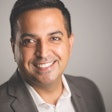
Carol Gomez Summerhays, DDS, seems like the poster child for doing it all: After serving as a U.S. Navy dentist, she opened a private practice before going on to be chosen as ADA president -- all while juggling family responsibilities as a wife and mother of two sons.
Now, at the upcoming 2016 Women in Dentistry conference, Dr. Summerhays hopes to encourage other women to step up and take on leadership positions in organized dentistry as well as in their own practices.
 ADA President Carol Gomez Summerhays, DDS. Image courtesy of the ADA.
ADA President Carol Gomez Summerhays, DDS. Image courtesy of the ADA."There are needs that are unique to women; there are differences between men and women dentists," Dr. Summerhays told DrBicuspid.com. "Every time we get together in women's conferences, I think it empowers women to take more leadership roles and to do more. We really need to get more women in the pipeline for leadership positions and empower them in their practices as well."
Even though they're medical professionals, often with advanced training and degrees, women dentists sometimes aren't held in the same esteem as their male counterparts, Dr. Summerhays said. She recalled discussing the issue with E. Dianne Rekow, DDS, PhD, who is the first American dean of a British dental school, King's College London Dental Institute.
"What she said shocked me," Dr. Summerhays said. Dr. Rekow told her, "You'll say something in the boardroom and no one will make a comment. And two minutes later, a man says the same thing, and they all say it's a great idea."
"I thought it was always me!" Dr. Summerhays added. "That has happened so often in board of trustees meetings -- didn't I just say that? I just had to laugh and thought, that happens all the time."
Varied background
After graduating from the Herman Ostrow School of Dentistry of the University of Southern California (USC), Dr. Summerhays served in the U.S. Navy Dental Corps for 15 years while raising two sons with her husband, marine biologist Soames Summerhays.
Among her many achievements, Dr. Summerhays is most proud of establishing an endowment in the name of her mentor, Clifton Dummett, DDS, a former professor emeritus of USC's dental school who wrote a history of the National Dental Association and numerous articles on dental history. He died in 2011.
"He's responsible for me getting to where I am, from the time I was in dental school until he died -- almost 40 years," she said. "He was just a great man. That's why mentors are so important: They encourage us to continue on and try to make a difference."
"Someone said, 'Start something that you can't finish in your lifetime,' " Dr. Summerhays said. "It's something that has always impressed me, so leaving legacies is very important to me."
Growing number of women dentists
While the majority of dentists are men, more women are entering the profession than ever before. Nearly half (47%) of dental students were women in the 2013-2014 school year, and 28% of practicing dentists were women in 2014 (143,000 men versus 55,000 women), Dr. Summerhays noted.
The dilemma that women have traditionally faced is the challenge of maintaining a practice while raising a family.
"Women have been responsible for taking care of the family; whether it's your children or your parents, it always falls to women for care," Dr. Summerhays observed. It's a struggle for many women dentists, she said.
"When I go to meetings, I always meet at least one woman in tears because she feels guilty about being a mother and not being there for her children, trying to balance career and family," she said. "Often, that's why women in leadership roles didn't have families."
Goals and trends
Dr. Summerhays' general goals include reforming licensure rules for dentists, as only certain exams are given in each state. Also, dentists must take another licensing exam when they move to another state. She called it "a huge issue, which happen a lot" for dentists and new graduates.
For example, one student attended a Colorado dental school but wanted to practice in his home state of Hawaii. So he had to pay for his patients' transportation to Hawaii so he could take his exams there, Dr. Summerhays explained. The issue especially affects many couples in the military, who frequently have to move out of state or overseas.
Another issue is the growing number of dental service organizations. The ADA has formed a task force to help dentists weigh the pros and cons of working for the entities.
"Our data show that most dentists still want to go into private practice, although the number of dentists going into solo practices is declining," Dr. Summerhays said. "The future appears to be more small group practices, and we're seeing that globally."
One thing she'd like to change is the fact that women dentists make 38% less than men.
"We need to take a closer look at that to see if it's because women don't negotiate or if they're not assertive enough in contracts, or if they just choose to make less money," Dr. Summerhays said.
More women are going into public-health dentistry, and many are forming group practices so they can modify their schedules to accommodate their families, she noted.
Reimbursement is a big challenge for the states, especially in the wake of the U.S. Patient Protection and Affordable Care Act's (ACA) expansion of Medicaid eligibility, Dr. Summerhays said. Because many states have reimbursement rates of less than 50% of usual or customary fees, it's difficult to attract enough dentists to treat such patients.
"Once reimbursement levels are 50% or higher [of usual or customary fees], then a lot more dentists participate," she said. "We are making progress and showing there really is a relationship between having a slightly higher reimbursement fee and participation."
Greater practice management is another trend that's likely to continue, Dr. Summerhays observed.
"I think this will be a growing market because running a practice today is a lot more complex," she said. "There's a lot more regulations that you have to comply with, and it requires a lot of expertise."
For the upcoming Women in Dentistry meeting, she is looking forward to the conversational aspect of her presentation.
"It's my favorite thing, discussing everyday issues with dentists," she said.
During the past year, Dr. Summerhays went to 35 dental schools where she held such meetings with faculty and students. "They may not like me at first, but I give them honest answers to their questions, and they become very engaged," she said.
Dr. Summerhays is able to give other women examples from her own life, as a woman in the Navy, in private practice, and with children.
"We have so many questions and so much to share with each other," she said.
Women are taking more leadership roles in dental schools, "but once they get into practice, we're still not seeing that transition into organized dentistry," Dr. Summerhays pointed out.
"It's the way we're brought up," she said. "We need to continue to empower women and give them more leadership skills so they have the confidence to take on leadership positions."
One of the big differences between men and women dentists is the lack of networking for women, Dr. Summerhays said. Men traditionally network on the golf course or at sporting events. But women, because of family obligations outside the practice, don't have the same kind of opportunities.
"We have to look for more ways that women can network, and having meetings that are primarily for women is becoming a very effective way to do that," she said.


















